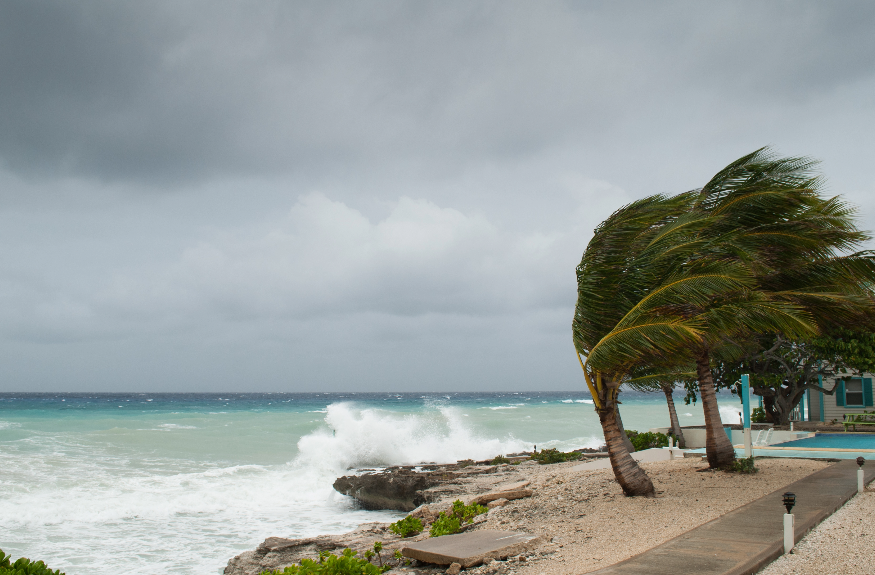Building Resilience into Your Property
Now more than ever, global events outside of commercial real estate are affecting our properties. Between the impacts of climate change, ongoing economic uncertainties, and unforeseen disruptions like the recent pandemic, commercial real estate professionals must create resilient properties to weather these storms.
Resilience, in this context, is the capacity of a property to endure and adapt to a range of events and stresses, ensuring sustained functionality, value, and viability for the property. In response to these challenges, property owners and managers are embracing resilient design and planning within their real estate assets. This article details a few tactics to enhance resilience at commercial real estate properties, ensuring their ability to thrive through adversity.
Assess Your Risks
At the heart of any resilience strategy lies an all-encompassing risk assessment. This entails a detailed evaluation of potential hazards that could threaten the property’s integrity and operations. These hazards may encompass a spectrum of scenarios, ranging from natural disasters such as floods, earthquakes, and hurricanes, to economic downturns and public health crises. Location plays a significant role in identifying potential risks.
For example, a coastal property is more likely to face tropical storms and hurricanes than a property in the midwestern United States. Conversely, a tornado is more likely to impact that same midwestern property over one in the US South. When considering risk, do not forget the human element. A property near a downtown area or a foreign embassy may face civil unrest and protests. By systematically identifying and understanding these risks, property stakeholders can lay the groundwork for effective resilience measures.
Resilience in Design and Construction
A cornerstone of resilience is embedding it within the property’s foundational design and construction processes. By employing resilient design principles from the outset, real estate developers can forge properties that are inherently equipped to withstand diverse stressors. This entails employing materials and construction techniques that are primed for durability and resistance.
In regions prone to flooding, elevating structures above potential water levels can be a key tactic, while earthquake-prone areas demand reinforced structures and advanced seismic engineering. Moreover, the incorporation of impact-resistant windows can provide an added layer of protection against unforeseen events. Even simple security systems such as keycards, or well-trained security staff can make a major difference in building resiliency into your property.
Consider Your Utility Systems
A critical aspect of resilience is ensuring the uninterrupted availability of essential utilities. Rather than relying solely on a single utility source, property managers are adopting a diversified approach. This may include the usage of backup power generators that activate during outages, alternative water sources to counter supply disruptions, and redundant communication systems to ensure continuous connectivity. Remember, it is best to have systems in place before a crisis, and building backups into your systems will ensure continued operation.
Harnessing Technology
Technological innovation can help in augmenting your property’s resilience. Smart building technologies and data analytics can empower property managers with real-time insights into the property’s performance, facilitating early detection of anomalies. With an array of sensors strategically placed throughout the property, issues such as water leaks or electrical irregularities can be identified promptly, enabling rapid response and mitigation. Even during an extreme event such as winter storms or tornadoes, managers can remotely monitor the situation and quickly identify any damage afterwards.
Preparedness
Resilience hinges on preparedness and responsiveness. Regular training sessions and drills for property staff are instrumental in ensuring a swift, efficient response to emergencies. Going above and beyond the federal and local requirements for training can ensure your team is ready for anything. Familiarity with evacuation procedures, emergency contacts, and communication protocols can significantly mitigate damage and safeguard tenant well-being.
Fortifying a property’s resilience also entails shoring up its financial preparedness. Establishing and maintaining sufficient financial reserves to offset unexpected expenses arising from property damage, business interruptions, or market downturns are essential. Collaborating closely with insurers is vital to ensure comprehensive coverage against a spectrum of potential risks.
In the aftermath of a major event such as a flood or tropical storm, it is critical that your team knows who to call for the cleanup and repair. Major events like these do not happen in a vacuum, and being first in line with your service partners will ensure a faster return after building damage occurs. Building a relationship with your restoration provider now will help make sure you can work with them effectively when there is a major situation at your property.
Engagement and Communication
Resilience is a collective effort that necessitates tenant engagement. Transparent communication channels that convey emergency protocols, safety measures, and property-specific resilience strategies foster a collaborative approach to these challenges. Encouraging tenants to develop their own business continuity plans helps you to create a mutually supportive community at your property. Resilience does not exist in isolation. Collaborating with local communities and authorities helps property-level resilience strategies to better integrate into broader regional plans. This collaboration can yield shared resources, support networks, and coordinated responses during crises.
Building Resilience
In a world of escalating uncertainties, building resilience into commercial real estate properties is not just good business, it is necessary. Comprehensive risk assessments, resilient design and construction, versatile utility systems, and advanced technological integration will equip properties to navigate challenges we all face eventually. By fostering a culture of preparedness and embracing collaboration with tenants and communities, CRE professionals can fortify the foundations of their property in the face of an ever-evolving landscape.
To stay up to date on news and resources such as this and other topics of importance to the real estate industry, subscribe to the free CRE Insight Journal Newsletter using this link.









